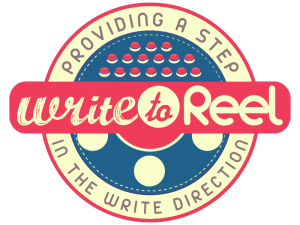An excerpt from my script review for The Wendigo (1970) which will be available 09/12/22:
5.) Format
This script had a lot going for it, but here’s where I want to spend the bulk of our time.
As amateur screenwriters we’re encouraged to read certain scripts when starting out.
Some of those are projects that, although worthwhile story wise, may not reflect certain format for today’s market.
For this exact reason, it’s highly recommended that you read multiple projects, both in and out of the genre you’re considering and scripts that are considered general “classics” but one or two more recent.
Do you have to read a script per weekend?
Absolutely not, and I’d argued that would eventually become an excuse to procrastinate writing your own spec.
But, you should read a few scripts in the genre upon which you’re embarking, along with another couple that do things “well” whether dialogue, witty description, or something else.
Find techniques to emulate, and then “make them your own” is the reasoning behind reading these last few.
For instance, I love Aaron Sorkin scripts for the dialogue.
Does reading an Aaron Sorkin script directly relate to writing a Wendigo based spec?
Nope…but I bet I’ll get some interesting ideas for exchanges that pit my characters at odds while stuck in the wilderness!
(You want to write for a living, gotta put the time in.)
What I don’t want to happen is you read a single script like this from 1970, and include shit we really don’t do anymore.
Character lists on page 2.
Mentally intimidating wall of text on page 3 as your intro.
Specific shots of characters and their faces.
And remember the more common idea of scene headings versus minislugs.
Scene headings should be used to introduce us to the main location of that particular scene, say…
EXT. CAMPFIRE – NIGHT
Then let your story unfold around the fire, giving the minimum required to tell us the story.
If something is extra important, say the eyes of a character employ a mini slugline.
David eats in silence, glancing up at Defago.
DEFAGO’S EYES
Stare through David, at something unseen in the distance.
Is David even there?
For instance in this script, there’s this really cool scene where David wakes to find Defago curled up in bed sobbing, subconsciously.
It should be this really tense moment as David tries to figure out what the fuck is going on, but instead we’re trying to figure out how David is seeing Defago instead of why or what is happening to him.
When writing a script, the most important thing to remember with format is tell the story.
Everything else (in this section) comes second.
The other issue is the page length.
82 pages is far too short when you take into account there’s a shit ton of breaks given all the angles and shots included.
To expand on this story properly, it should probably fall into the area of 90 or so pages which would be a good target to shoot for.
(I don’t say this as “a rule” more that by editing out all the shots on characters before they speak, and taking the “spooky” to the next level like the story needs, you’d probably be closer to that 90 pages.)
Lastly, the typos.
There were a lot of weird ones, almost as if the script was run through some sort of bootleg translator program.
At one point, I even noticed “1” and “0” being used for “I” and “O”.
It was odd, but as always these are the easiest issues to fix with your script, and by proofreading effectively, readers know you value their time.
Want EARLY access to our videos, uploads, and movie/script reviews? Members get them FIRST! Follow this link to our Discussion Forum.





